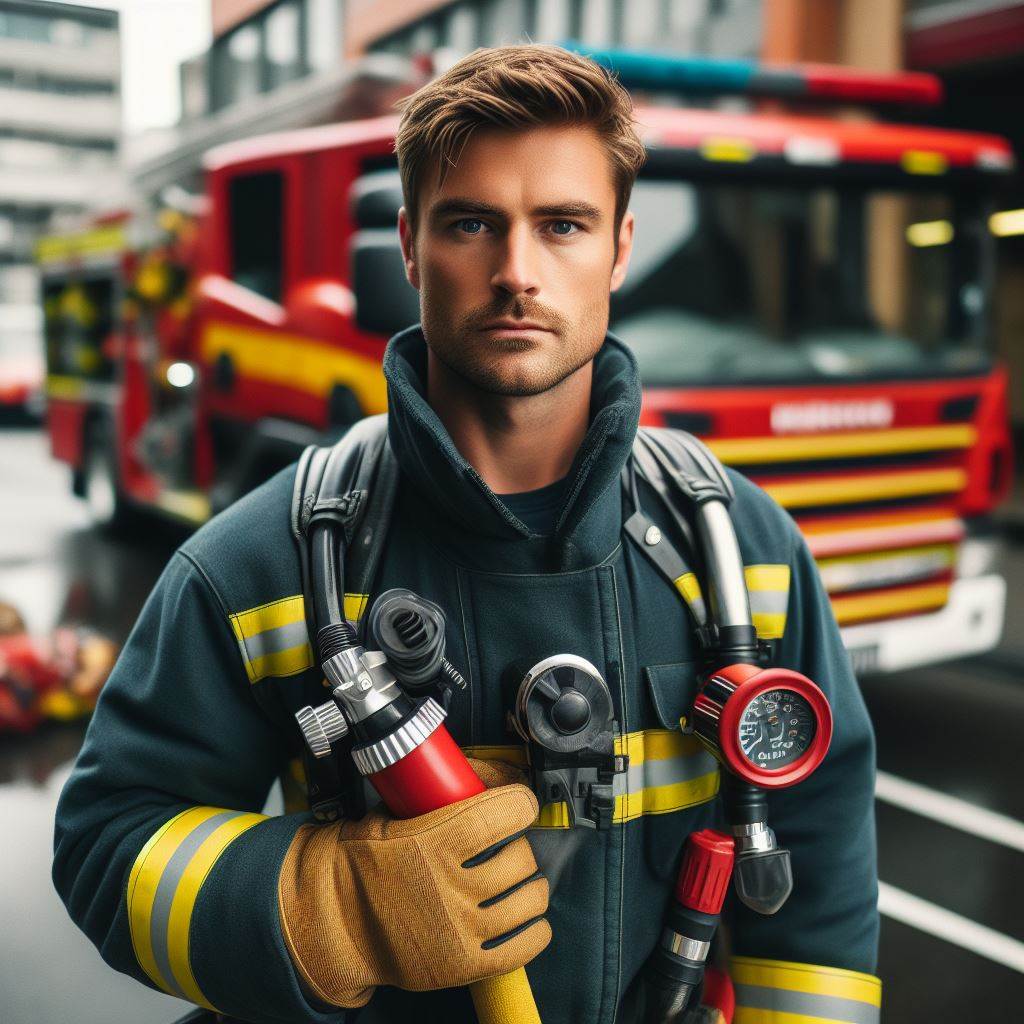Introduction
Fire prevention is crucial to protect lives and properties. The expertise of NZ pros adds credibility to the tips.
In this blog post, we will discuss important fire prevention tips from these professionals.
By following these tips, you can greatly enhance your safety and reduce the risk of fire incidents.
Importance of Fire Prevention
The importance of fire prevention cannot be overstated.
Fires can lead to devastating consequences, resulting in injuries, loss of life, and extensive damage to homes and businesses.
Taking preventative measures is essential to mitigate these risks and ensure the safety of yourself and your loved ones.
Expertise of the NZ Pros
The NZ pros are highly experienced and knowledgeable in the field of fire prevention.
Their expertise has been gained through years of practical experience and extensive training.
They have a deep understanding of fire dynamics and are well-versed in the latest fire safety regulations and practices.
Preview of Fire Prevention Tips
- Maintain and regularly test smoke detectors in your home or workplace.
- Keep flammable materials away from heat sources and open flames.
- Install fire extinguishers in key areas and ensure they are regularly inspected and maintained.
- Develop and practice a fire escape plan with your family or colleagues.
- Practice electrical safety by not overloading outlets and regularly checking wiring.
By following these tips, you can significantly reduce the risk of fire and ensure the safety of yourself and those around you.
Stay tuned for the upcoming sections where we will discuss each tip in more detail and provide additional valuable insights.
Remember, fire prevention is a collective responsibility, and these tips will empower you to take proactive action.
Tip 1: Install Smoke Alarms
Importance of smoke alarms in early detection
- Smoke alarms are essential in detecting fires at an early stage.
- Early detection allows for a quick response, increasing the chance of safety and minimizing property damage.
Pros’ recommendations on ideal locations for smoke alarms
- Smoke alarms should be installed in every bedroom, outside each sleeping area, and on every level of the house.
- Install smoke alarms on the ceiling or high up on a wall, as smoke rises.
- Avoid placing alarms near windows, doors, and vents, as draft might prevent them from functioning properly.
- In large houses, install interconnected smoke alarms, so when one alarm sounds, they all sound.
Regular maintenance and testing instructions
- Test smoke alarms monthly by pressing the test button.
- Replace batteries at least once a year, or when the low-battery warning chirps.
- Vacuum smoke alarms regularly to remove dust and debris that might interfere with their functionality.
- Replace the entire smoke alarm unit every ten years to ensure optimal performance.
Legal requirements in NZ
- In New Zealand, it is mandatory to have working smoke alarms installed in all rental properties.
- Landlords are responsible for ensuring smoke alarms are installed, maintained, and operational.
- Tenants are responsible for testing and replacing batteries in smoke alarms during their tenancy.
- Non-compliance with smoke alarm regulations can result in fines up to NZD $4,000.
By following these fire prevention tips and installing smoke alarms, you significantly increase your chances of detecting a fire early, protecting your loved ones and your property.
Remember to maintain and test your smoke alarms regularly to ensure they are always in optimal working condition. Stay safe!
Read: Interviews with Veteran NZ Firefighters
Personalized Career Consulting
Unlock your potential with expert career advice tailored to your goals. Get personalized guidance and actionable steps toward your dream career in New Zealand.
Get StartedTip 2: Create and Practice a Fire Escape Plan
Why having an escape plan is crucial
Having a fire escape plan is crucial because it ensures the safety and well-being of everyone in your household or residing in your living space.
Step-by-step guide for creating a comprehensive fire escape plan
- Identify all possible exits: Take a walk around your home or apartment and locate all possible exits, including doors and windows.
- Determine a meeting point: Choose a safe meeting point outside your residence where everyone can gather after escaping.
- Create a floor plan: Draw a floor plan of your home, marking all windows, doors, and potential obstacles that could hinder escape.
- Assign responsibilities: Assign each family member or roommate specific tasks during an emergency, such as helping younger children or assisting elderly residents.
- Practice opening windows and doors: Ensure that all windows and doors can be easily opened without any obstructions.
- Install smoke detectors: Place smoke detectors in every bedroom, outside each sleeping area, and on every level of your home.
- Decide on an escape route: Determine the fastest and safest route to exit your home from each room, considering both primary and secondary options.
- Practice escaping each room: Conduct drills to practice escaping from every room, emphasizing the importance of staying low to avoid smoke inhalation.
- Teach children how to dial emergency services: Make sure everyone knows how to call emergency services and give them your address.
- Make adjustments as needed: Regularly review and update your fire escape plan as your living situation changes or when new potential hazards arise.
Importance of practicing the plan with family members or roommates
Practicing the fire escape plan with family members or roommates ensures that everyone understands their roles and responsibilities, making the process smoother and more efficient during an actual emergency.
Suggested tips for staying calm during an emergency
- Stay low: During a fire, smoke rises, so staying close to the ground will minimize smoke inhalation.
- Cover your mouth and nose: Use a cloth or towel to cover your mouth and nose to filter out harmful smoke particles.
- Test doorknobs for heat: Before opening a door, use the back of your hand to touch the doorknob. If it feels hot, do not open the door; find an alternative route.
- Stay close to walls: As you move through your home, stay close to walls to avoid disorientation and easily find exits.
- Don’t panic: Stay calm and focused, and follow your fire escape plan step-by-step, trusting in the preparation you have done.
Remember, a fire escape plan is only effective if it is regularly practiced and understood by all members of your household or living space. Stay prepared and stay safe!
Read: Technology in NZ’s Firefighting Efforts
Tip 3: Maintain Heating Equipment Properly
Experts’ advice on regular maintenance and cleaning of heating systems
Maintaining heating equipment properly is crucial for fire prevention and the safety of your home and family.
In New Zealand, where winter temperatures can be harsh, having functional heating systems is essential.
Here are some tips on how to maintain different types of heating equipment effectively:
Chimneys are commonly found in older homes and are used to vent smoke and gases from wood burners and fireplaces.
Regular inspections and cleanings are necessary to remove creosote buildup, a highly flammable substance that can cause chimney fires.
Hire a professional chimney sweep to ensure proper maintenance and prevent potential fire hazards.
Wood burners are popular heating options in many Kiwi homes. To keep them functioning efficiently and safely, regular cleaning is necessary.
Remove ash and soot buildup from the wood burner and chimney, as these can affect airflow and lead to poor combustion, lower heat output, and even chimney fires.
Use a specialized brush and vacuum to clean the flue and chimney, and check for any signs of damage or wear.
It’s also important to store firewood properly, away from the house, to prevent moisture buildup and potential insect infestations.
Transform Your Career with a Professional CV and Cover Letter
Stand out to employers with an ATS-optimized resume and tailored cover letter designed to match your dream role. Let us craft your job application materials for success!
Get StartedOil heaters provide an effective heating solution, but their maintenance requirements should not be overlooked.
Proper ventilation is crucial for preventing overheating and potential fire hazards.
Ensure that the heater is placed in a well-ventilated area and that there is enough space around it.
Regularly clean the heater’s filters to maintain efficiency and prevent dust and debris buildup, which can affect performance and increase the risk of malfunctions.
Dangers of faulty heating systems and potential risks
It’s essential to emphasize the dangers of faulty heating systems and the potential risks they pose.
Carbon monoxide poisoning is a serious concern with various heating equipment, such as wood burners and oil heaters.
Install carbon monoxide detectors in your home and test them regularly to ensure they are functioning correctly.
Faulty heating systems can also increase the risk of house fires, leading to property damage and potential harm to occupants.
Thus, regular maintenance, inspections, and cleaning of heating equipment are vital for fire prevention and the safety of your home and family.
In general, taking proper care of heating equipment is crucial to ensure their efficient and safe operation.
Regular maintenance and cleaning of chimneys, wood burners, and oil heaters are essential to prevent fire hazards and other potential risks.
By following these suggestions, you can keep your heating equipment in good condition, minimize the dangers associated with faulty systems, and enjoy a warm and safe home during the colder months.
Read: NZ Fire Service: History and Evolution

Tip 4: Be Mindful of Electrical Safety
General recommendations for electrical safety in homes
- Avoid using multiple adapters or extension cords plugged into one outlet as it can overload the circuit.
- Make sure your home has sufficient electrical outlets to distribute the load evenly.
- Regularly inspect electrical cords, outlets, and switches for any signs of wear or damage.
- Do not use damaged or frayed cords, and replace them immediately.
- Install ground fault circuit interrupters (GFCIs) in areas where water is present, such as kitchens, bathrooms, and outdoor outlets.
- Keep electrical cords away from heat sources, water, and flammable materials to prevent fire hazards.
- Unplug appliances and electronics when not in use to reduce the risk of electrical fires.
Experts’ advice on proper electrical maintenance and inspections
- It is recommended to have a licensed electrician conduct a thorough inspection of your home’s electrical system.
- Regular maintenance checks can identify and fix potential hazards before they become major problems.
- Inspections should include checking the electrical panel for any loose or overheating connections.
- Assess the condition of wiring, outlets, and electrical devices to ensure they meet safety standards.
- Experts advise homeowners to schedule regular electrical maintenance to keep their homes safe.
Tips for preventing electrical fires caused by overloaded circuits
- Avoid plugging too many devices into a single outlet. Use power strips with built-in overload protection.
- Distribute the load by connecting appliances and electronics to different outlets or circuits.
- Be cautious with high-wattage devices such as space heaters, air conditioners, and kitchen appliances.
- If you frequently experience tripped circuit breakers, it may indicate that the circuit is overloaded.
- Consider upgrading your electrical system to accommodate the wattage requirements of your appliances.
Potential risks and signs of faulty electrical wiring
- Faulty electrical wiring is a common cause of electrical fires in homes.
- Signs of faulty wiring include frequent tripped circuit breakers, flickering lights, and sparking outlets.
- Other warning signs include the smell of burning plastic or a burning odor near electrical outlets.
- If you notice any of these signs, it is crucial to contact a qualified electrician for immediate repairs.
- Ignoring faulty wiring can lead to more significant problems, including electrical shocks and fires.
In review, being mindful of electrical safety is crucial for preventing fires in homes.
Boost Your Career with a Standout LinkedIn Profile
Attract recruiters and expand your network with a fully optimized LinkedIn profile tailored to highlight your strengths and professional goals. Let your profile open doors to new opportunities!
Get OptimizedBy following general recommendations, conducting regular maintenance and inspections, preventing overload, and recognizing signs of faulty wiring, homeowners can significantly reduce the risk of electrical fires and ensure the safety of their households.
Read: Firefighting and Ecology in New Zealand
Tip 5: Cooking Safety Measures
Importance of practicing safe cooking habits
- Cooking safety is essential to prevent fires and injuries in the kitchen.
- It is crucial to practice safe cooking habits to protect yourself, your loved ones, and your property.
- By following proper safety measures, you can avoid accidents and minimize the risk of starting a fire.
Experts’ recommendations for fire prevention in the kitchen
- Never leave cooking unattended – always stay in the kitchen while cooking.
- Keep flammable objects, such as dish towels and curtains, away from the stove.
- Use a timer to remind yourself to check on the food while it’s cooking.
- Keep children and pets away from the cooking area to avoid accidents.
- Use a lid or a fire blanket to smother a small grease or oil fire.
Common mistakes to avoid while cooking
- Neglecting to clean cooking surfaces and equipment regularly can lead to grease build-up, increasing the risk of fire.
- Using improper cooking utensils or tools can cause accidents or potentially start a fire.
- Overloading electrical outlets with multiple appliances can overload circuits and create a fire hazard.
- Using damaged or frayed electrical cords for kitchen appliances is extremely dangerous and should be avoided.
- Not following proper ventilation practices can lead to a build-up of fumes, increasing the risk of a fire.
Tips for handling kitchen appliances safely
- Ensure that all kitchen appliances are in good working condition, with no frayed cords or faulty switches.
- Keep flammable materials, such as oven mitts and paper towels, away from hot surfaces and stovetops.
- Remember to turn off appliances, such as ovens and stoves, after use to reduce the risk of fire.
- Keep a fire extinguisher rated for kitchen fires readily accessible in case of emergencies.
- Avoid wearing loose-fitting clothing while cooking to prevent it from catching fire accidentally.
- Follow the manufacturer’s instructions and safety guidelines when using kitchen appliances.
- Regularly inspect and clean kitchen appliances to prevent the accumulation of grease and other flammable substances.
- Be cautious when cooking with oil – use a deep fryer with a thermostat control and never overheat the oil.
In a nutshell, cooking safety is crucial for preventing fires and accidents in the kitchen.
By practicing safe cooking habits, following experts’ recommendations, avoiding common mistakes, and handling kitchen appliances properly, you can ensure a fire-free cooking environment.
Remember, prevention is always better than dealing with the devastating consequences of a fire.
Stay vigilant and prioritize safety in the kitchen to protect yourself and your loved ones.
Conclusion
Recap of fire prevention tips from NZ pros
- Install smoke alarms on every level of your home.
- Keep flammable items away from heat sources.
- Practice an escape plan with your family.
- Regularly clean your chimney and inspect electrical cords.
- Be cautious when using portable heaters and cooking appliances.
By following these tips, you can significantly reduce the risk of fire in your home. Remember, prevention is key.
Spread awareness about fire prevention by sharing these tips with your friends, family, and neighbors. Together, we can create a safer community.




